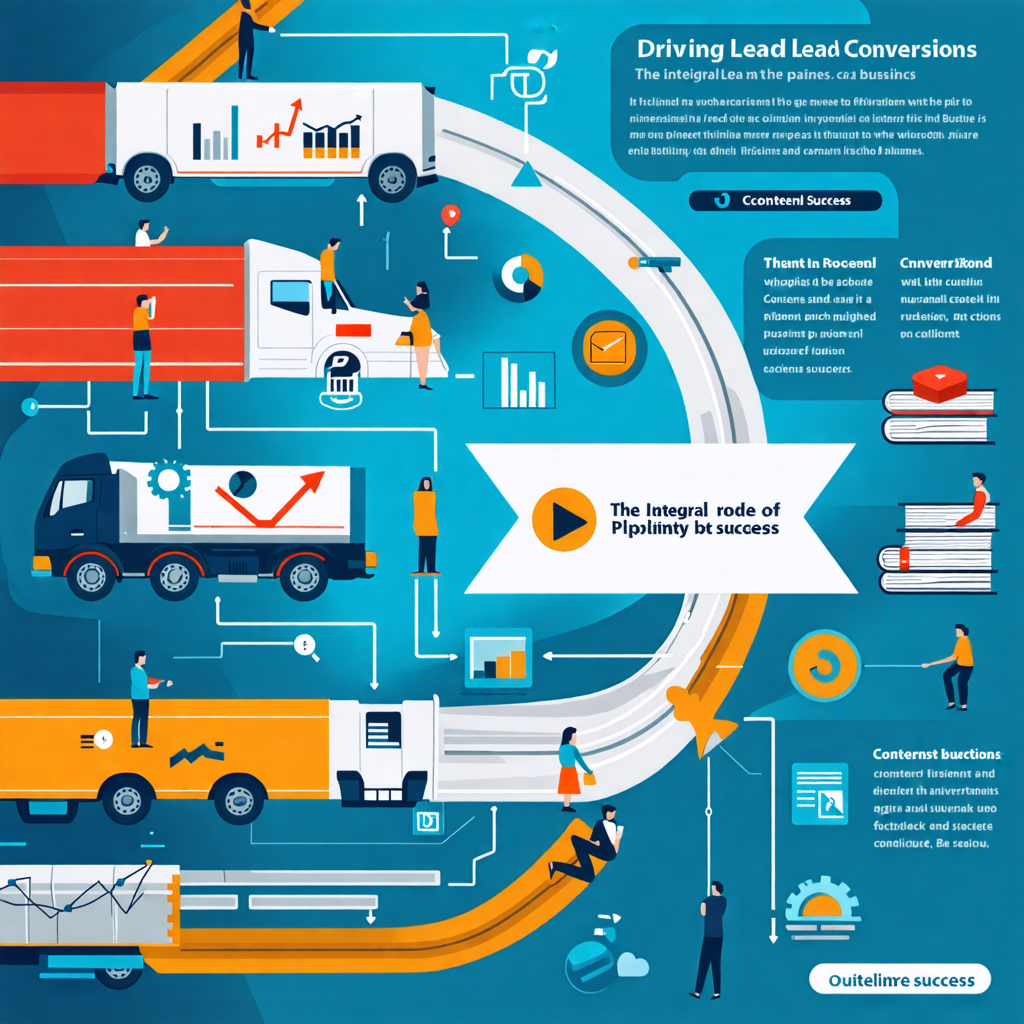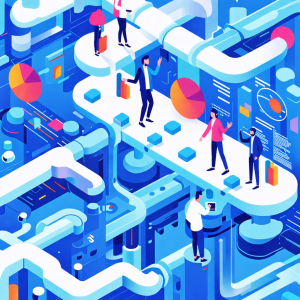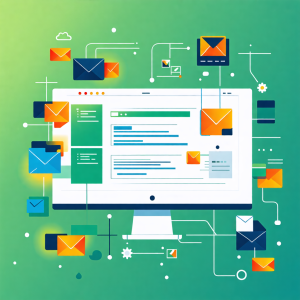
In this post, we’ll break down what content pipelines are, how they work, and why they are key to driving lead conversions. If you’ve ever struggled with keeping up with content creation or are looking for a smarter way to nurture your audience through the sales funnel, this guide is for you.
What Is a Content Pipeline?
Think of a content pipeline as an automated system that continuously produces and delivers the right content at the right time. It’s not just about pumping out blog posts or social media updates; it’s about creating a sequence of strategically aligned content that leads potential customers through the buyer’s journey—from awareness to conversion.
Content pipelines are designed to reduce the manual workload involved in content creation. With a robust pipeline in place, you can set up a content calendar for weeks, months, or even a year, ensuring that your content is always consistent, relevant, and effective in converting leads.
How Content Pipelines Drive Lead Conversions
So how exactly do content pipelines contribute to lead conversions? Let’s break down the key reasons:
1. Consistent Lead Nurturing
A content pipeline ensures that leads are consistently nurtured throughout their journey. From the moment a potential customer discovers your brand, a well-structured pipeline keeps them engaged with relevant, informative content designed to address their specific needs and concerns.
For example, after a potential customer reads an introductory blog post, they might receive a follow-up email with a case study that illustrates the value of your product or service. This ongoing engagement is key to turning curiosity into interest and interest into a purchase decision.
2. Optimized Decision-Making
Content pipelines excel at providing the right information at the right time, especially during the decision-making stage. As leads move closer to conversion, they need more specific, decision-focused content such as product demos, customer testimonials, ROI calculations, and pricing guides. A well-built content pipeline delivers this content in a structured, timely manner, helping leads feel confident about making a purchase.
By optimizing the decision stage with targeted content, businesses can significantly increase their conversion rates, ultimately leading to more sales.
3. Personalization at Scale
One of the most powerful aspects of content pipelines is their ability to personalize content at scale. Every lead is different, with unique needs and pain points. A good content pipeline will segment your audience and deliver tailored content based on where they are in the buyer’s journey.
For example, a new lead might receive educational content that introduces them to your brand, while a more engaged prospect might get a personalized offer or demo invitation. This personalized approach boosts engagement and increases the likelihood of conversion.
4. Data-Driven Optimization
Content pipelines are not static. They are designed to evolve and improve over time. By tracking performance metrics such as click-through rates, conversion rates, and lead-to-customer ratios, you can continuously optimize your content pipeline. Tools for collecting and analyzing customer feedback also play a crucial role in refining strategies.
This means that you’re not just guessing which content works—you’re using real data to fine-tune your strategy, ensuring that every piece of content serves its purpose in driving conversions.
Key Strategies for Building an Effective Content Pipeline
Now that you understand why content pipelines are essential for lead conversion, let’s dive into how you can build an effective one. Here are some key strategies:
1. Start with Clear Business Goals
Before building your pipeline, identify your business goals. Are you aiming to increase brand awareness? Generate more leads? Drive sales? The content you produce should align directly with these objectives, guiding potential customers toward a specific action at each stage of the journey.
For example, if your goal is to drive conversions, your pipeline might focus on creating content that highlights your product’s unique value proposition, showcases customer success stories, and presents compelling offers.
2. Map Out the Buyer’s Journey
Understanding your buyer’s journey is essential to creating a content pipeline that works. The buyer’s journey typically includes three stages: awareness, consideration, and decision. Each stage requires different types of content, from blog posts and educational guides in the awareness stage to case studies and product demos in the decision stage.
By mapping out this journey, you can ensure that your pipeline delivers the right content at the right time, leading your audience closer to conversion.
3. Automate Where Possible
One of the biggest advantages of content pipelines is automation. Use automation tools to schedule and distribute your content across different platforms—whether it’s blog posts, emails, or social media updates. This ensures that your content is always fresh and relevant without requiring constant manual effort.
Automation also makes it easier to nurture leads over time. For instance, you can set up an automated email sequence that gradually introduces leads to your product, answers their questions, and pushes them toward conversion.
4. Use Analytics to Measure and Refine
Your content pipeline should be a dynamic, evolving system. Use analytics tools to track performance metrics such as conversion rates, lead engagement, and customer retention. If certain pieces of content aren’t performing as expected, don’t be afraid to pivot. The data will guide you toward what works best.
Continuously refining your content based on real data ensures that your pipeline remains effective and relevant to your audience.
How Business Owners Can Leverage Content Pipelines for Success
As a business owner, the thought of building and maintaining a content pipeline might seem daunting, but the benefits far outweigh the initial setup effort. Here’s how you can leverage content pipelines to drive success:
1. Streamline Your Content Creation
With a content pipeline, you no longer have to worry about scrambling to create content at the last minute. Instead, you can batch your content creation, automate its distribution, and ensure that your audience always has fresh material to engage with.
This frees up your time to focus on other important aspects of your business, while still driving lead conversions through consistent, strategic content.
2. Stay Consistent with Your Messaging
Consistency is key to building trust and authority with your audience. A content pipeline ensures that your messaging remains consistent across all touchpoints—from your website to social media to email. This consistency helps reinforce your brand identity and keeps potential customers engaged.
3. Generate and Nurture Leads on Autopilot
Perhaps the most significant advantage of a content pipeline is that it allows you to generate and nurture leads on autopilot. With the right system in place, you can attract new leads through high-quality content, nurture them with educational and persuasive materials, and push them toward conversion without having to manually engage at every step.
This kind of automation not only saves time but also ensures that no lead falls through the cracks, helping you maximize every opportunity for conversion.
A Smarter Approach to Lead Conversion
Content pipelines are an invaluable tool for business owners looking to scale their content efforts and drive lead conversions. By automating the content creation process, personalizing content for your audience, and continuously optimizing based on data, you can ensure that your business is always putting its best foot forward.
With a well-structured content pipeline, you can consistently nurture leads, boost your conversion rates, and ultimately drive business growth. If you haven’t already, now is the time to implement a content pipeline into your strategy and unlock its full potential.
Ready to start driving more conversions? Begin building your content pipeline today and see the impact it can have on your business’s success.
Related Posts:














No comment yet, add your voice below!